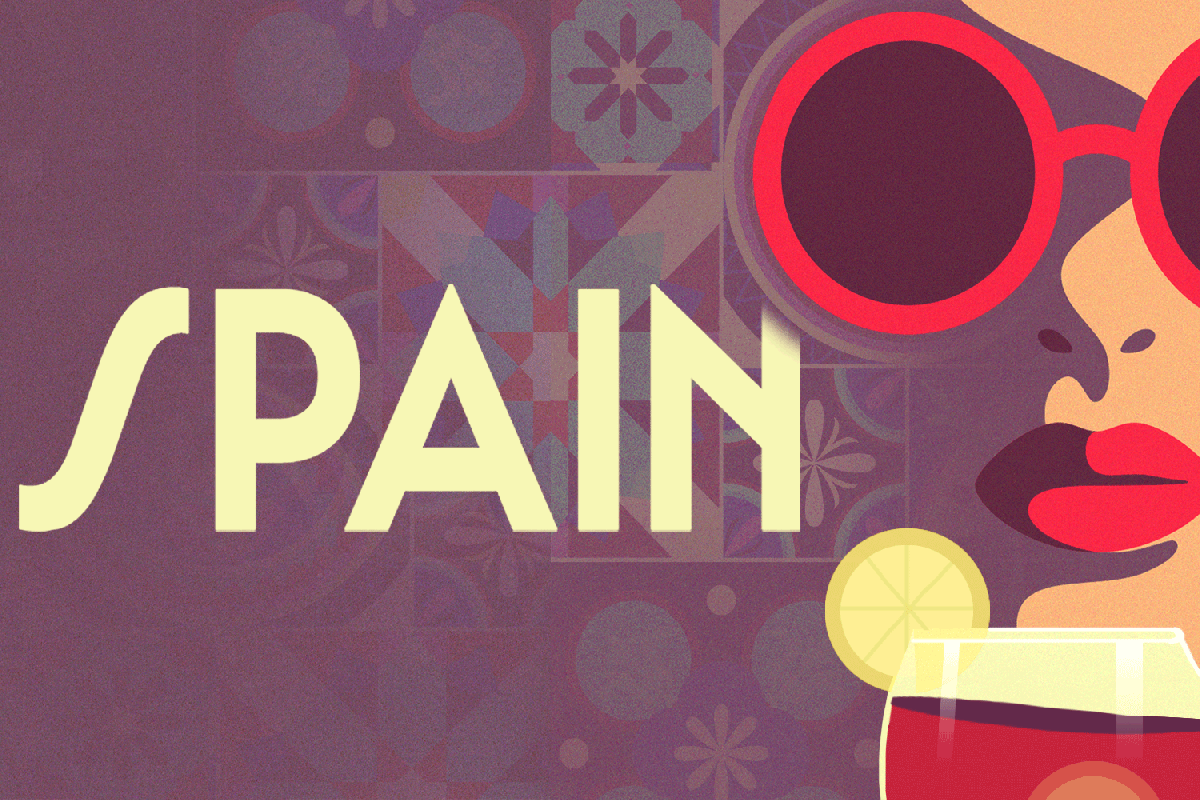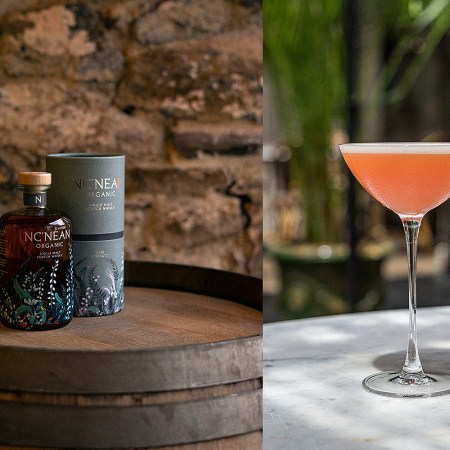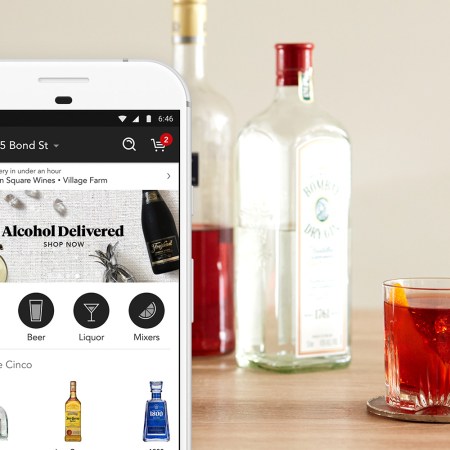
To celebrate the incredible drinking cultures of Europe, we dove deep into 10 different countries to get to know a little more about what’s in their glasses and how it got there in the first place. Click here to see them all.
The Spanish are renowned for their robust drinking culture. They vermut in the afternoon, pour wine with meals, finish dinner with sherry and sip Gin and Tonics into the later hours. But their approach isn’t quantity-driven — rather, it’s built off small and sessionable drinks shared with friends and colleagues at all hours of the day.
“In Spain, drinking culture is closely tied to socializing surrounded by loved ones,” says Chef Iñaki Murua, who was born in the Basque region of Laguardia and now runs Ikaro in La Rioja and Momento by Ikaro in Miami. “It’s based on experiencing moments of happiness.”
“There’s a lighthearted nature to the drinking culture of Spain,” says Eric Bolyard, executive chef and managing partner of La Compagnie and the recently-opened Experimental Cocktail Club New York. “It’s conviviality at its finest.”
One thing that isn’t in short order in Spain are snacks. Tapas and pintxos often come complimentary with your drink, and small plates menus are meant to fill you up so you can keep the party going. “Mounds of salty Marcona almonds, plates of meaty Cantabrian anchovies, slabs of cured and air-dried tuna (mojama), garlicky, piquant chorizo,” says Nicolas Lopez, concept chef partner of Mercado Little Spain. “These are iconic because they are so much a part of Spain. They’re items that have sustained people for thousands of years.”
Thirsty for more? Here’s how to drink like a Spaniard.


“The thing I love most about the drinking culture of Spain is its diversity and deep connection to regional traditions,” says Bryan Dayton, the owner of Corrida, a Spanish-inspired chophouse in Boulder, Colorado, with an all-Spanish beverage program. “Each region has its own iconic drinks that are deeply rooted in local history and culture. It’s a celebration of place, flavor and community that makes every experience feel really unique and authentic.” These are the most notable ones.
Wine
“If we had to define one drink, it would be wine,” Murua says. “Spain is a land of wines — not just any wine, but high-quality ones.” The selection is diverse, from the sparkling wines of the Cava-producing regions to the rich tempranillos of La Rioja and the crisp Albariños of the coast.
“Wine is our biggest treasure,” Lopez says. “With all due respect to France and Italy, our diversity of the grapes, climactic and historic knowledge, and heritage makes Spanish wine culture probably the best in the world.”
Gin-Tonica
“Spain played a major role in popularizing the Gin and Tonic, serving it in large goblets with sexy garnishes,” Dayton says. “It quickly spread across Europe and then worldwide.” Expect stemmed bowls filled with ice and garnishes, served with tonic on the side. Top up as you will.
Vermouth
Alongside wine are wine-adjacent beverages. “Vermouth is a staple of Spanish drinking culture, enjoyed daily and often served on tap in bars across the country,” Dayton says. Sip it on its own, over a big rock, with a slice of orange and an olive, or mixed with soda. And sip around, too — there are a dozen major brands and hundreds of hyper-local vermouths available in the country. Start with Astobiza’s bitter-citrusy vermouth or Ataman, a manzanilla-based vermouth, and explore from there.
Sherry
Also in the wine-ish realm is sherry, a fortified wine from the south of the country. “If you’re in southern Spain, it’s the only beverage you need,” Dayton says. “With its wide range of expressions, from Fino to Pedro Ximénez, it offers something for everyone.”

Cider
These aren’t your sweet, highly sparkling American or English versions — they’re largely dry, slightly acidic and subtly sour. “Cider (sidra) is essential in the Basque region,” Dayton says. “Go to a cidery and pair fresh cider with steak. It is a wild experience — one you never knew you needed until now.”
And the Homemade Thing
Outside of restaurants, Spaniards tend to doctor their drinks. Take Sangria, a way of upcycling yesterday’s wine by adding fresh fruit and a splash of brandy. And there are regional drinks in the same vein. ”In the summer, kalimotxo with Coca-Cola is popular in the North,” Murua says. “There’s rebujito (sherry and soda) in the south and other drinks only made for specific festivals, like zurracapote (wine sweetened and flavored with orange, lemon and cinnamon) and vino hervido (similar to zurracapote but served hot).”


Spain’s La Tomatina festival (August) — where tomatoes are torpedoed at participants — is largely fueled by drinking. Catalonia’s Festa de la Filoxera (September) is dedicated to the plague that wiped out all of Europe’s vineyards in the 19th century. The festival historically includes the destruction of a giant robot bug.


Spain sets a high standard for bar bites. There are finger foods, like olives and almonds. There are swirls of jamon, a savory cured meat. There’s pan con tomate, cured anchovies and boquerones (white anchovies marinated in vinegar), and conservas, pull-top tins of shellfish and other preserves. “These products are salty and full of umami, which helps the beverages shine even more,” Lopez says. “There’s actually an expression in Spanish: Que no te la den con queso, or “won’t get fooled with the cheese.” It means you can get a bad wine with cheese so the wine tastes better.”

“And if you’re anywhere in the northeast, do not miss out on a cider house!” says Nic Parsons, lead bartender at Cooks & Soldiers, a Spanish restaurant in Atlanta. “Cider houses are extremely fun and a very Basque thing. Walls are covered in barrels of aging apple juice, and tastings come with food, usually seafood from Bay of Biscay. Everyone lines up with cups and you catch cider as it flies. It splatters!”
Bolyard swears by Madrid’s La Venencia. “It’s a dream,” he says. “Sherry pulled from casks, dusty sherry bottles towering to the ceiling, a blackboard of tapas served expeditiously and rough-around-the-edges bartenders.”
Then there are the new-school haunts. Barcelona is home to Sips, which was the world’s best bar in 2023, and three other bars in the city have graced the top 10 in recent years.

1. There’s a drink for every hour of the day: Lopez swears the key to Spanish drinking is having the respect to enjoy the right drink at the right moment. “We are the kings of aperitivi (pre-meals) with vermouth and beer,” he says. “Lunch and dinner is for wine, after dinner and nightlife is for Gin and Tonics and other spirits.”
2. And there’s a sherry for every occasion: “A salty Gilda pintxo [a skewer of guindilla pepper, Cantabrian anchovy filet and a manzanilla olive] needs a chilled Fino or Manzanilla sherry,” says Nathan Sohnly, beverage director of Urdaneta in Portland, Oregon, a Basque restaurant with Spain’s prestigious ICEX Foods and Wines certification. “Ending a dinner with membrillo (quince paste) and Spanish Manchego wouldn’t be complete without a sweet, smoky dessert sherry such as Moscatel or Pedro Ximenez.” If there isn’t a sherry, there’s a vermouth. “Sweet and nutty slices of Jamon Iberico with Marcona almonds can be a perfect match to complex red vermouth (try adding a splash of soda water to your vermouth for a low-ABV mixed drink),” he adds.
3. Lean into sobremsa: “The most charming and inviting aspect of the drinking culture of Spain is the sobremasa,” Sohnly says. “It’s the time spent sitting around the table after a meal, enjoying the company and conversations of those around you. It’s a time to sit back, relax, engage with friends and family, and reflect on the day. It is something so authentically Spanish that there isn’t even an English word equivalent.”
4. Pace yourself: “What I love so much about the drinking culture of Spain is that (unlike in America) it’s a marathon and not a sprint,” Sohnly says. “Spaniards know how to eat, and they appreciate a variety of beverage pairings to have throughout the meal (and the day). An early breakfast will be followed with a mid-morning snack and, of course, an aperitivo with lunch. Early evening snacks precede tapas and drinks, followed by a late evening dinner.”
5. Skip the glass, try the porrón: The porrón is a Catalonian vessel which follows these steps: fill it up (wine, cider, cocktails — anything crushable), tilt your head back and pour it down your throat.


Tinto de Verano
A warm-weather mix of lemon-flavored soda (Gaseosa in Spain, though Sprite will do in a pinch) and red wine

The City of 4 Quarters
By Nicholas Parsons of Cooks & Soldiers
1.25 oz. La Pento Sherry Cask-Aged Brandy
.25 oz. Cynar
.5 oz. Luxardo Cherry Syrup
5 dashes Angostura Bitters
2 dashes black cardamom bitters
Orange peel, for garnish
Cherry, for garnish
Green cardamom pods, for garnish (optional)
Add all liquid ingredients to a mixing glass with ice. Stir until chilled, and strain into a rocks glass over a large ice cube. Finish with your choice of garnishes.
Every Thursday, our resident experts see to it that you’re up to date on the latest from the world of drinks. Trend reports, bottle reviews, cocktail recipes and more. Sign up for THE SPILL now.



